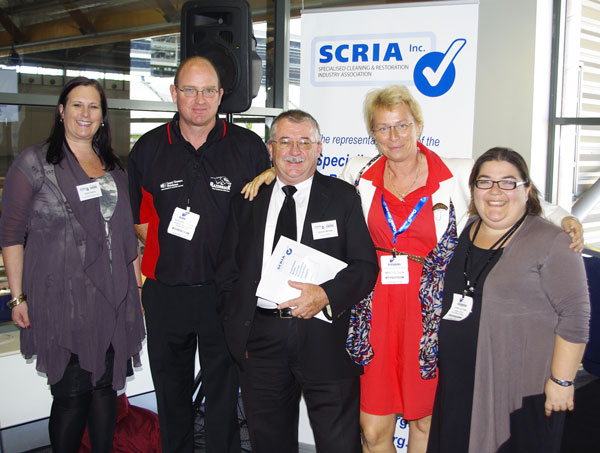

In an effort to provide restoration practitioners and consumers with a reference point for best practice in Australia, and after much research and collaboration, the Specialised Cleaning & Restoration Industry Association (SCRIA) has delivered a first draft of the Australian Water Damage Restoration Guidelines.
The document was distributed at the SCRIA conference, Saddle up for Business Success, a program jam-packed with expert speakers focusing on both technical and business topics, along with social functions to allow industry professionals to mingle.
Currently, there is no Australian standard or benchmark guideline for the Australian restoration industry engaged in water damage restoration. Many practitioners reference the ANSI/IICRC S500-2006 – the IICRC Standard for Professional Water Damage Restoration. The S500 is a procedural standard based on reliable restoration principles, research and practical experience to provide a specific set of practical standards for water damage restoration. This is accepted as global best practice in lieu of any specific Australian standard or guideline.
While SCRIA endorses the S500 as offering best global practice guidelines for water damage and restoration, there are a number of reasons that the Australian industry felt that it was important to have a document developed for local conditions. The document came about after the major storms inBrisbane, where there was large scale flooding which was beyond the reach of our industry.
Volunteers and local community groups were heavily involved in the cleanup process, but there was no consensus on what truly needed to be done and was the aftermath was going to be. In watching these events unfold, SCRIA members felt that it was critical that a best practice document be developed for everyone to work from.
A draft of the proposed document was presented at the SCRIA conference. The document has been released to SCRIA members and consultation is now taking place. SCRIA has asked all members to thoroughly review the document and to submit comments. It was emphasized that this is a work in progress. SCRIA encourages all stakeholders who would like to comment to join the association and take part in the process.
It was made clear that the restoration industry needed to be the driving force behind a definitive outline of water damage response protocols. The intent of the release was to broaden the knowledge base of industry contributors and to record and include the expanded input before releasing the document for review by other cross industry stakeholders, including builders and loss adjusters.
If you have any questions about the document or would like further information please contact the SCRIA office on 1800 621 872. The document’s final release date is estimated to be in late 2013.
The Draft Water Damage Guideline was developed by a Restoration Council set up by SCRIA. Members of the Restoration Council include Duncan Bennett, Nick Bredhauer, Dr. Heike Neumeister Kemp, SteveThornton – Smith, with contributions from Garry Carroll and Mark Heath.